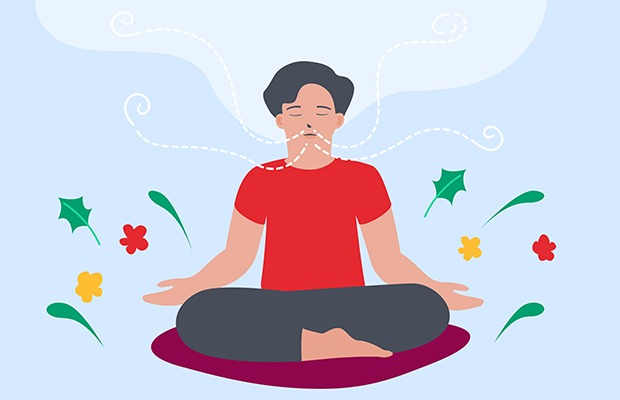Table of Contents
Introduction
Nomophobia has emerged as a new type of worry in the age of smartphones today. This word, which is short for “no-mobile-phone phobia,” refers to the uneasiness and worry felt when one is unable to utilize their mobile phone. Nomophobia, which was first used in a 2008 UK Post Office study, is a reflection of our increasing reliance on mobile technology. According to the survey, whether they misplaced their phone, ran out of battery, or couldn’t get network service, 53% of mobile users experienced anxiety.
This article examines the causes, signs, and effects of nomophobia while providing management techniques for this contemporary disorder. The fear of losing phone access, obsessive checking, obsession with the phone, discomfort when it’s out of reach, and excessive use that interferes with in-person relationships are common symptoms. Socially, it strains connections and lowers the quality of human interactions; psychologically, it can result in worry, stress, and despair.

Think about doing frequent digital detoxes, establishing phone-free limits, engaging in mindfulness exercises, utilizing programs to restrict phone usage, and, in extreme situations, getting professional assistance to overcome nomophobia. Our digital and offline lives can coexist more harmoniously if we recognize and treat nomophobia.
The Origins Of Nomophobia
A relatively recent condition, nomophobia emphasizes how reliant our society has become on mobile technology. The phrase, which stands for “no-mobile-phone phobia,” was coined in response to a UK Post Office survey from 2008. According to this study, whether they misplaced their phone, ran out of credit, ran out of battery life, or were left without network service, 53% of mobile phone users reported having severe anxiety.

The anxiety of disconnecting has grown since then as cellphones have developed into indispensable instruments for entertainment, information, and communication. These days, gadgets are an essential part of every day life. They act as entry points to social media, news, business emails, and an endless supply of applications that satisfy practically any need or need. As a result, the fear of not being able to use one’s phone has increased in frequency and intensity.
The growing reliance on cellphones has significant effects on social connections and mental health. Constant connectedness breeds FOMO, or the fear of missing out, which makes being disconnected even more stressful and uncomfortable. Recognizing the trade-off between maximizing the advantages of mobile technology and reducing the anxiety it may cause is essential to understanding nomophobia. Finding ways to control and lessen our dependency on these gadgets is essential as we traverse this digital age to preserve mental health and promote deeper, stronger relationships with people in real life.
Symptoms and Signs of Nomophobia
Nomophobia manifests through a range of symptoms that highlight an individual’s deep-seated reliance on their mobile phone. Here are some key signs:
Panic or Anxiety :
The mere prospect of losing access to their phone causes severe anxiety in many people. Fears of losing contact with loved ones, missing critical information on social media, or being unable to communicate in an emergency can all contribute to this anxiety. The level of panic can be high enough to interfere with regular tasks and mental clarity.
Compulsive Checking
A common sign of nomophobia is the compulsive need to frequently check the phone for messages, notifications, or updates, even when there are none. This behavior often arises from a fear of missing out (FOMO) and can become habitual, leading to constant interruptions in daily life.
Preoccupation
Even in situations where their phone is not in use, people who suffer from nomophobia frequently find themselves thinking about it. Due to their frequent mind wandering back to their phone, this persistent mental emphasis on their gadget can prevent them from fully participating in other activities and interactions.
Discomfort Without Phone
Another warning indication is when you feel uncomfortable or distressed when the phone is out of reach. This can show up emotionally as feelings of loneliness or disconnection, or physically as restlessness or unease. The incessant need to always have a phone close at hand can result in carrying it with you and continuously checking it.
Overuse
One of the main signs of nomophobia is excessive phone use, which frequently comes at the expense of in-person connections and real-world experiences. Because the person values digital contacts over in-world ones, this usage might cause problems for them in their personal relationships, at work, and with other duties.
It is crucial to identify these signs in order to comprehend and treat nomophobia. People can take action to improve their interactions with their mobile devices and lessen the anxiety that comes with being disconnected by becoming aware of these practices and their effects.
Impact on Health
Nomophobia, the fear of being without a mobile phone, has significant impacts on mental health, manifesting in various ways:
Increased Stress
Stress levels can rise when there’s a constant need to check and keep connected on one’s phone. The constant barrage of alerts, messages, and updates makes it challenging to de-stress and unwind since it induces a condition of constant awareness. This constant state of activity can keep the mind from relaxing, which raises tension and anxiety levels all around.
Sleep Disturbances
Overusing smartphones can seriously impair the quality of your sleep, especially right before bed. The hormone melatonin, which controls sleep, is inhibited by the blue light that phone displays generate. Additionally, consuming stimulating content immediately before bed might keep the brain busy, which complicates falling asleep. This can result in sleep disorders such as insomnia, which makes people exhausted and less able to handle everyday stressors.
Social Isolation
Even if cellphones make it easier to connect with others, relying too much on them can paradoxically result in feelings of isolation and loneliness when interacting with others in real life. The emotional resonance and depth of in-person encounters are sometimes absent from virtual relationships. People who place a higher value on virtual communication than face-to-face contacts may experience a decline in the caliber of their social connections and a greater sense of isolation.
Reduced Productivity
The constant interruptions brought on by notifications and apps on smartphones can seriously reduce focus and output. It is difficult to stay focused on work when there are a lot of interruptions, whether you are in an academic or professional context. People may find it difficult to properly manage their time and duties in the face of constant digital noise, which could result in a drop in performance and efficiency.
Understanding these mental health impacts is crucial for developing strategies to mitigate the negative effects of nomophobia. By recognizing the signs and taking proactive measures, individuals can foster healthier relationships with their smartphones, ultimately improving their mental well-being and overall quality of life.
Managing Nomophobia
The dread of being without a cell phone, or nomophobia, needs to be treated using a multimodal strategy that addresses its behavioral as well as psychological components. The following are some helpful techniques to minimize and lessen its impact:
Digital Detox: Regularly scheduling time away from your phone is crucial in breaking the cycle of dependency. Designate specific periods each day or week where you engage in activities that do not involve technology. This could include hobbies like reading, exercising, or spending time outdoors. A digital detox helps reset your relationship with your phone and reduces the compulsion to constantly check it.

Set Boundaries: Establishing phone-free zones or times can significantly minimize usage. For instance, keep phones out of the dining area to ensure meals are enjoyed without digital distractions. Similarly, banning phone use an hour before bedtime can improve sleep quality. These boundaries encourage more mindful and intentional phone use, fostering better habits over time.
Mindfulness Practices: Incorporating mindfulness techniques such as meditation, deep breathing, or yoga can help manage the anxiety associated with nomophobia. These practices promote relaxation and mental clarity, allowing you to develop a healthier relationship with technology. Mindfulness encourages you to stay present in the moment, reducing the urge to constantly reach for your phone.
Use Technology Wisely: Leverage technology to combat overuse by utilizing apps designed to limit phone usage or track screen time. These tools provide insights into your phone habits and help you set realistic limits. Features like app blockers or focus modes can also reduce distractions and help you concentrate on tasks without the temptation of checking your phone.
Seek Professional Help: For severe cases of nomophobia, seeking professional help can be beneficial. Therapists or counselors can offer strategies to cope with anxiety and dependency issues. Cognitive-behavioral therapy (CBT), in particular, can help reframe negative thoughts and behaviors associated with phone use. Professional support ensures that you receive personalized guidance tailored to your specific needs.
Through the application of these tactics, people can effectively control their nomaphobia and cultivate a more balanced and healthy relationship with their mobile devices. In addition to addressing the anxiety associated with phone use, this all-encompassing method improves general wellbeing and quality of life.
Conclusion
Nomophobia is a prime example of how mobile technology has significantly changed modern life. Even though smartphones offer unparalleled connectedness and convenience, they can also cause a great deal of anxiety. It is essential to identify and deal with this concern. Comprehending nomophobia enables people to cultivate a more harmonious equilibrium between their virtual and physical existence.
People can guarantee that technology improves rather than detracts from their well-being by efficiently regulating their nomophobia. The anxiety that comes with always being connected can be lessened by employing techniques like digital detoxes, boundary-setting, mindfulness training, responsible technology use, and getting professional assistance. With these methods, people can profit from smartphones without becoming overly dependent on them.










